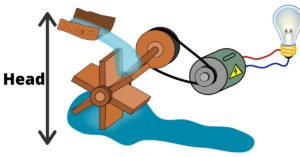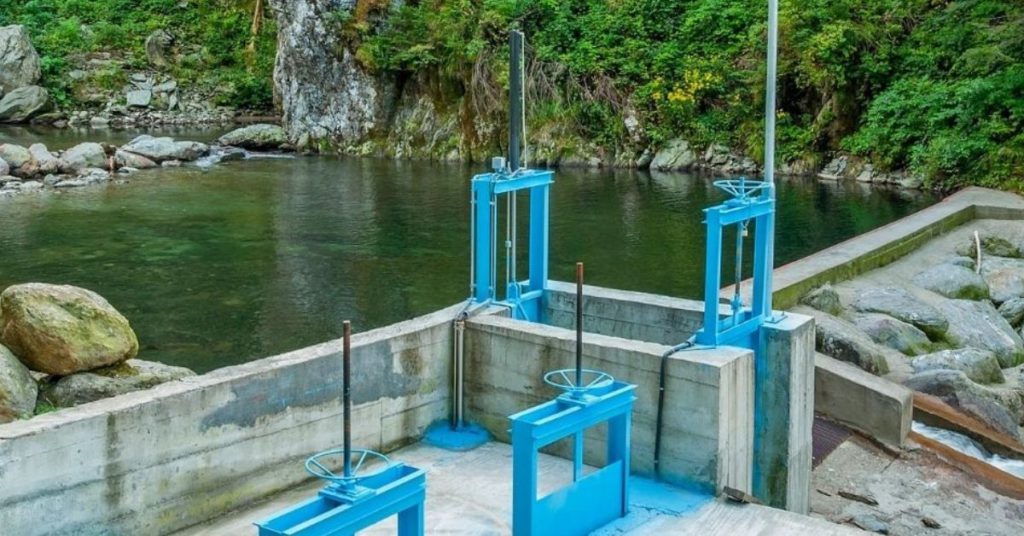If you live near a stream or a river, you must have thought of utilizing the free and abundant supply of power. A micro-hydropower system is a good way to do it. However, most people are not aware of the costs associated with it. Let’s discuss that so you can determine if it is right for you.
So, How much does a micro-hydro system cost? Generally, a micro hydropower system’s installed cost is between $4000 to $6000 per kilowatt. A fully functioning system that can power an average household costs around $20,000. This cost can go up or down based on location and the system’s capacity.
This is a generalized estimate, and it may be affected by several other factors, which we will be discussing in this article.
Factors affecting the costs
There are multiple expenses associated with installing a micro hydropower system. These can significantly vary based on your location. Understanding these is crucial in determining the exact cost that you will incur.
Labor – Unless you are an experienced engineer, you need skilled people to install your power system. For most people, it’s not possible to DIY it. I am a mechanical engineer myself, and I have worked on hydroelectric systems, but still, I would need expert help if I am installing one at my home
The labor costs are different for different countries and states. For example, if you are installing a power plant in Nepal, it will significantly lower than the plant being installed in the US.
Location – Difficult terrains will make it harder to work and transport the equipment. Ideally, the installation company will inform you about these during the preliminary assessment.
Head – Head is the height difference between the entry and exit points of your power system. Higher heads are better as they produce more energy.

A high head and low flow system cost less than the one with a low head and higher flow as equipment used in the former is cheaper and smaller than later.
Distribution costs – Once you have installed a hydropower plant, you need to transfer the electricity produced to your desired location. These costs pile up as the distance between the micro-hydro plant and destination increases.
Cost of generating equipment – A Microhydro power system consists of several components like a weir, pipelines, trash tank, turbine( Pelton, Francis, turgo, propellor or pump-as-turbine), control system, and tailrace. The location and terrain influence the cost of these pieces of equipment.
Grid Buyback – In most places, you can connect your hydroelectric power plant to the main grid. This allows you to sell surplus power back to the grid and take power when your load increases beyond the capacity of your setup. Generally, the government would have to buy it from you. This reduces the cost of a power plant in the long run.
It would be best if you inquired your local authorities about it.
Environmental impact fees – Before you even begin constructing a micro hydropower plant, you have to pay the professionals to access the landscape to determine that the construction will not harm the environment in any way. These are usually fixed fees set by concerned departments.
This is an important part of the process as it is illegal to build a power plant on a river or a stream without proper permission from the authorities.
Initial Costs – In addition to environmental assessment fees, you would also have to pay fees for designs, land use permits, construction permits, power management fees, etc
The authorities are working on streamlining this process and remove the bottlenecks for quicker approvals. Once one plant has been approved, it makes it easier for other plants to get accepted.
Maintenance costs – Like all working machines, a micro hydropower plant also needs maintenance. These repairs add on small yearly fees that include transmission line maintenance, general administrations, emergency repairs, and equipment maintenance.
A study by IRENA/GIZ concluded that maintenance costs are USD 52/kW/year for small hydropower plants.
You can reduce the maintenance cost by keeping the system free of debris and maintaining the maximum head.
Loans – If you are taking financial assistance, you would also have to factor in interest rates. However, most governments encourage the use of clean energy and provide interest-free loans. Some even provide generous grants. If you have a PPA agreement, it could significantly improve your chances of getting assistance from authorities.
How long does it take for a micro hydropower system to pay for itself?
Generally, a micro hydropower system can pay for itself in 5 to 10 years. This can go up and down based on the size and location of the plant. With a normal life span of 30 years, these plants are a lucrative investment.
How we arrived at this conclusion
We have done intensive research on this topic and inquired several turbine manufacturers to get an accurate assessment. We took approximate values and left sufficient margins to account for miscellaneous expenses.
Calculations
Let’s assume that you are opting for a 5Kw turbine system. The cost of a good-quality turbine shipped to your location will cost around $10,000
Let us say that you spent $10,000 more on installation, permits, transmission, etc.
This will bring your installed cost to $20,000
Now we need to know how much power will it provide in a year
Annual Power Output = Maximum Power Output x 24 x 365 x capacity factor
The maximum Power Output is the 5 kW in this case
24 is the number of hours in a day
365 is the number of days
Capacity factor is the ratio of actual power output and maximum power output ( it is around 0.5 for a micro hydropower plant )
Annual power output = 5 x 24 x 365 x 0.5 = 21,900 Kwh
This is enough to power two average households for an entire year.
Let’s calculate the financials
21,900 Kwh will save you $2847 in a year (considering the average electricity cost of 13 cents)
If we ignore the inflation, it will take 7.7 years to save $20,000
Other factors like government assistance, inflation, and grid buyback can significantly reduce this timeframe. However, we have not included those to keep the assessment as realistic as possible. Also, not everyone would be able to benefit from these.
Comparison with other systems
If you invest in a micro hydropower system, you are likely to get your investment back in a few years, and after that, you can enjoy almost free electricity.
Compared to a wind turbine which can take 15 to 20 years to get back your investment, MHPP is a safer investment.
If you compare it to solar power, yes, the solar power system is a little cheaper, but the power generated by MHPP is continuous independent of day, night, or the clouds.

